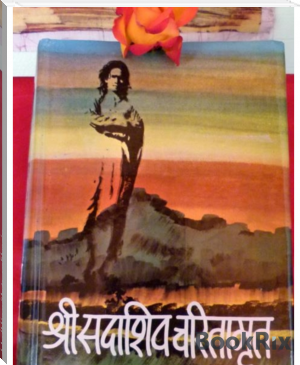Martin Luther King Jr. Day Anthology by - (children's ebooks free online TXT) 📖

- Author: -
- Performer: -
Book online «Martin Luther King Jr. Day Anthology by - (children's ebooks free online TXT) 📖». Author -
A shilling edition followed the one-and-sixpence, and then one complete for sixpence. As to the total sale, Mr. Sampson Low reports: “From April to December, 1852, twelve different editions (not reissues) were published, and within the twelve months of its first appearance eighteen different London publishing houses were engaged in supplying the great demand that had set in, the total number of editions being forty, varying from fine illustrated editions at 15s., 10s., and 7s. 6d. to the cheap popular editions of 1s. 9d. and 6d. After carefully analyzing these editions and weighing probabilities with ascertained facts, I am able pretty confidently to say that the aggregate number of copies circulated in Great Britain and the colonies exceeds one and a half millions.” Later, abridgments were published.
Almost simultaneously with this furor in England the book made its way on the Continent. Several translations appeared in Germany and France, and for the authorized French edition Mrs. Stowe wrote a new preface, which served thereafter for most of the European editions. I find no record of the order of the translations of the book into foreign languages, but those into some of the Oriental tongues did not appear till several years after the great excitement. The ascertained translations are into twenty-three tongues, namely: Arabic, Armenian, Chinese, Danish, Dutch, Finnish, Flemish, French, German, Hungarian, Illyrian, Italian, Japanese, Polish, Portuguese, modern Greek, Russian, Servian, Siamese, Spanish, Swedish, Wallachian, and Welsh. Into some of these languages several translations were made. In 1878 the British Museum contained thirty-five editions of the original text, and eight editions of abridgments or adaptations.
The story was dramatized in the United States in August, 1852, without the consent or knowledge of the author, and was played most successfully in the leading cities, and subsequently was acted in every capital in Europe. Mrs. Stowe had neglected to secure the dramatic rights, and she derived no benefit from the great popularity of a drama which still holds the stage. From the phenomenal sale of a book which was literally read by the whole world, the author received only the ten per cent on the American editions, and by the laws of her own country her copyright expired before her death.
The narrative of the rise and fortunes of this book would be incomplete without some reference to the response that the author received from England and the Continent, and of her triumphant progress through the British Isles. Her letters accompanying the special copies were almost immediately replied to, generally in terms of enthusiastic and fervent thankfulness for the book, and before midsummer her mail contained letters from all classes of English society. In some of them appeared a curious evidence of the English sensitiveness to criticism. Lord Carlisle and Sir Arthur Helps supplemented their admiration by a protest against the remark in the mouth of one of the characters that “slaves are better off than a large class of the population of England.” This occurred in the defense of the institution by St. Clare, but it was treated by the British correspondents as the opinion of Mrs.
Stowe. The charge was disposed of in Mrs. Stowe’s reply: “The remark on that subject occurs in the dramatic part of the book, in the mouth of an intelligent Southerner. As a fair-minded person, bound to state for both sides all that could be said, in the person of St. Clare, the best that could be said on that point, and what I know IS in fact constantly reiterated, namely, that the laboring class of the South are in many respects, as to physical comfort, in a better condition than the poor in England. This is the slaveholder’s stereotyped apology; a defense it cannot be, unless two wrongs make one right.”
In April, 1853, Mr. and Mrs. Stowe and the latter’s brother, Charles Beecher, sailed for Europe. Her reception there was like a royal progress. She was met everywhere by deputations and addresses, and the enthusiasm her presence called forth was thoroughly democratic, extending from the highest in rank to the lowest. At Edinburgh there was presented to her a national penny offering, consisting of a thousand golden sovereigns on a magnificent silver salver, an unsolicited contribution in small sums by the people.
At a reception in Stafford House, London, the Duchess of Sutherland presented her with a massive gold bracelet, which has an interesting history. It is made of ten oval links in imitation of slave fetters. On two of the links were the inscriptions “March 25, 1807,” the date of the abolition of the slave-trade, and “August 1, 1838,” the date of the abolition of slavery in all British territory. The third inscription is “562,848—March 19, 1853,” the date of the address of the women of England to the women of America on slavery, and the number of the women who signed. It was Mrs. Stowe’s privilege to add to these inscriptions the following: “Emancipation D. C. Apl. 16, ‘62;”
“President’s Proclamation Jan. 1, ‘63;” “Maryland free Oct. 13, ‘64;” “Missouri free Jan. 11, ‘65;” and on the clasp link, “Constitution amended by Congress Jan. 31, ‘65. Constitutional Amendment ratified.” Two of the links are vacant. What will the progress of civilization in America offer for the links nine and ten?
One of the most remarkable documents which resulted from Uncle Tom was an address from the women of England to the women of America, acknowledging the complicity in slavery of England, but praying aid in removing from the world “our common crimes and common dishonor,” which was presented to Mrs. Stowe in 1853. It was the result of a meeting at Stafford House, and the address, composed by Lord Shaftesbury, was put into the hands of canvassers in England and on the Continent, and as far as Jerusalem. The signatures of 562,848 women were obtained, with their occupations and residences, from the nobility on the steps of the throne down to maids in the kitchen. The address is handsomely engrossed on vellum. The names are contained in twenty-six massive volumes, each fourteen inches high by nine in breadth and three inches thick, inclosed in an oak case. It is believed that this is the most numerously signed address in existence. The value of the address, with so many names collected in haphazard fashion, was much questioned, but its use was apparent in the height of the civil war, when Mrs. Stowe replied to it in one of the most vigorous and noble appeals that ever came from her pen. This powerful reply made a profound impression in England.
This is in brief the story of the book. It is still read, and read the world over, with tears and with laughter; it is still played to excited audiences. Is it a great novel, or was it only an event of an era of agitation and passion? Has it the real dramatic quality—the poet’s visualizing of human life—that makes works of fiction, of imagination, live? Till recently, I had not read the book since 1852. I feared to renew acquaintance with it lest I should find only the shell of an exploded cartridge. I took it up at the beginning of a three-hours’ railway journey. To my surprise the journey did not seem to last half an hour, and half the time I could not keep back the tears from my eyes. A London critic, full of sympathy with Mrs. Stowe and her work, recently said, “Yet she was not an artist, she was not a great woman.” What is greatness? What is art? In 1862 probably no one who knew General Grant would have called him a great man. But he took Vicksburg. This woman did something with her pen,—on the whole, the most remarkable and effective book in her generation.
How did she do it? Without art? George Sand said, “In matters of art there is but one rule, to paint and to move. And where shall we find conditions more complete, types more vivid, situations more touching, more original, than in Uncle Tom?” If there is not room in our art for such a book, I think we shall have to stretch our art a little. “Women, too, are here judged and painted with a master hand.” This subtle critic, in her overpoweringly tender and enthusiastic review, had already inquired about the capacity of this writer. “Mrs. Stowe is all instinct; it is the very reason that she appears to some not to have talent. Has she not talent? What is talent? Nothing, doubtless, compared to genius; but has she genius? I cannot say that she has talent as one understands it in the world of letters, but she has genius as humanity feels the need of genius,—the genius of goodness, not that of the man of letters, but of the saint.” It is admitted that Mrs. Stowe was not a woman of letters in the common acceptation of that term, and it is plain that in the French tribunal, where form is of the substance of the achievement, and which reluctantly overlooked the crudeness of Walter Scott, in France where the best English novel seems a violation of established canons, Uncle Tom would seem to belong where some modern critics place it, with works of the heart, and not of the head. The reviewer is, however, candid: “For a long time we have striven in France against the prolix explanations of Walter Scott.
We have cried out against those of Balzac, but on consideration have perceived that the painter of manners and character has never done too much, that every stroke of the pencil was needed for the general effect. Let us learn then to appreciate all kinds of treatment, where the effect is good, and where they bear the seal of a master hand.”
It must be admitted to the art critic that the book is defective according to the rules of the modern French romance; that Mrs.
Stowe was possessed by her subject, and let her fervid interest in it be felt; that she had a





Comments (0)